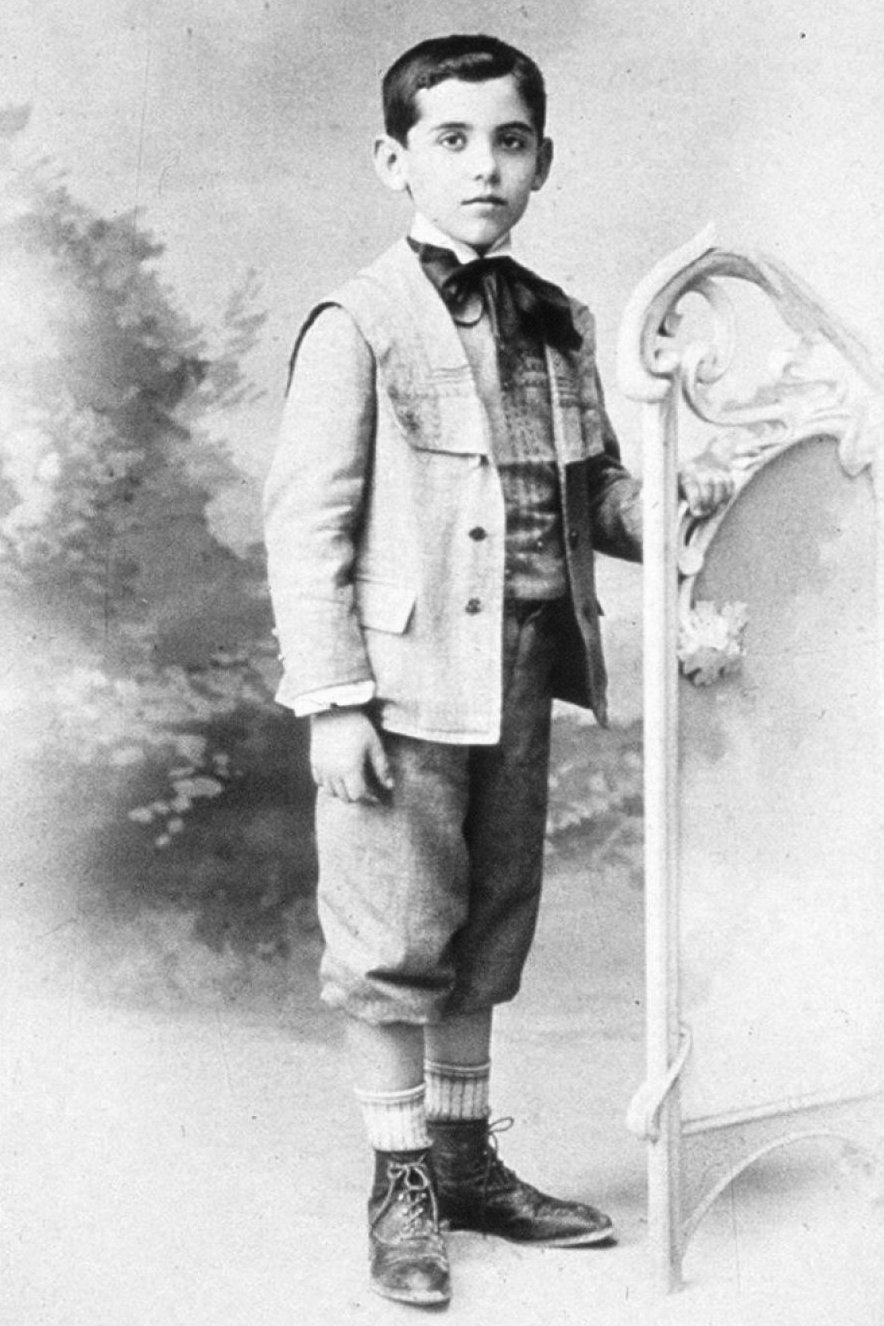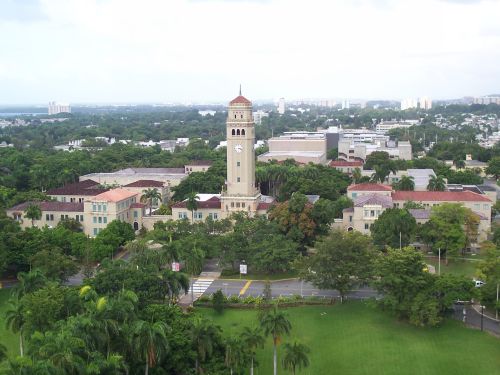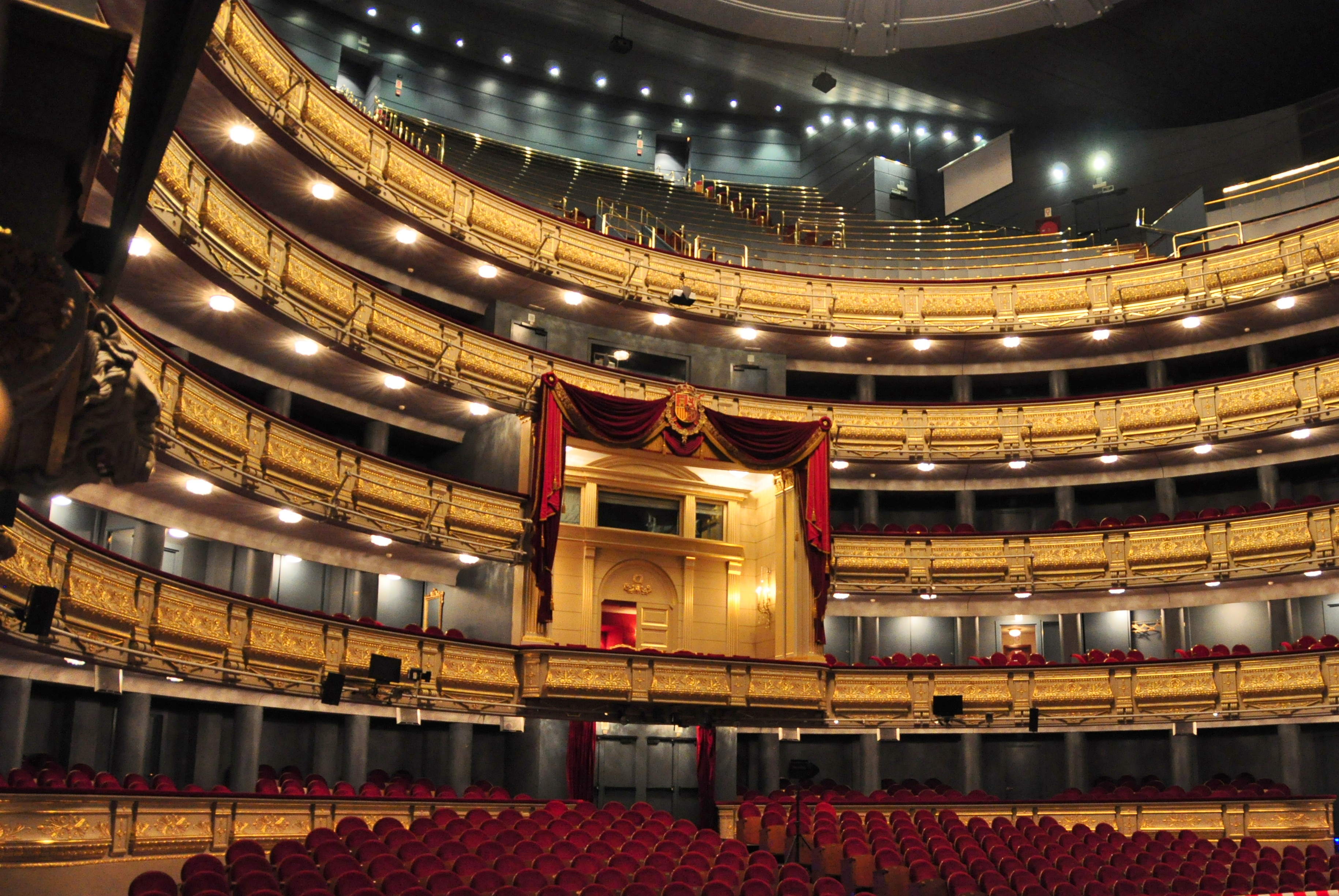|
The Public (play)
''The Public'' (''El público''), also known as ''The Audience'', is a play by the twentieth-century Spanish dramatist Federico García Lorca. It was written between 1929 and 1930. The two complete manuscripts which once existed have not been found, and may be lost. All that is known is an earlier draft, missing an act.Martínez Nadal, Rafael (1974), Lorca's The Public: A Study of his Unfinished Play (El público) and of Love and Death in the Work of Federico García Lorca, London: Calder & Boyars, pp. 70–82, It remained unpublished until 1978 and did not receive its first professional theatrical production until 1986. The world premiere of the play was directed by Victoria Espinosa on 15 February 1978 at the University of Puerto Rico. Production History ''The Public'' was first presented at the University of Puerto Rico on 15 February 1978, where it was directed by Victoria Espinosa. A translated version by Henry Livings (in consultation with the director/designer, Ultz) was fir ... [...More Info...] [...Related Items...] OR: [Wikipedia] [Google] [Baidu] |
Federico García Lorca
Federico del Sagrado Corazón de Jesús García Lorca (5 June 1898 – 19 August 1936), known as Federico García Lorca ( ), was a Spanish poet, playwright, and theatre director. García Lorca achieved international recognition as an emblematic member of the Generation of '27, a group consisting mostly of poets who introduced the tenets of European movements (such as symbolism, futurism, and surrealism) into Spanish literature. He initially rose to fame with '' Romancero gitano'' (''Gypsy Ballads'', 1928), a book of poems depicting life in his native Andalusia. His poetry incorporated traditional Andalusian motifs and avant-garde styles. After a sojourn in New York City from 1929 to 1930—documented posthumously in ''Poeta en Nueva York'' (''Poet in New York'', 1942)—-he returned to Spain and wrote his best-known plays, ''Blood Wedding'' (1932), ''Yerma'' (1934), and ''The House of Bernarda Alba'' (1936). García Lorca was gay and suffered from depression after the end ... [...More Info...] [...Related Items...] OR: [Wikipedia] [Google] [Baidu] |
University Of Puerto Rico
The University of Puerto Rico ( es, Universidad de Puerto Rico, UPR) is the main public university system in the U.S. Commonwealth of Puerto Rico. It is a government-owned corporation with 11 campuses and approximately 58,000 students and 5,300 faculty members. UPR has the largest and most diverse academic offerings in the commonwealth, with 472 academic programs of which 32 lead to a doctorate. History In 1900, at Fajardo, the ''Escuela Normal Industrial'' (normal school) was established as the first higher education center in Puerto Rico Puerto Rico (; abbreviated PR; tnq, Boriken, ''Borinquen''), officially the Commonwealth of Puerto Rico ( es, link=yes, Estado Libre Asociado de Puerto Rico, lit=Free Associated State of Puerto Rico), is a Caribbean island and Unincorporated .... Its initial enrollment was 20 students and 5 professors. The following year it was moved to Río Piedras. On March 12, 1903, the legislature authorized founding of the University of Puerto ... [...More Info...] [...Related Items...] OR: [Wikipedia] [Google] [Baidu] |
Spanish Language
Spanish ( or , Castilian) is a Romance languages, Romance language of the Indo-European language family that evolved from colloquial Latin spoken on the Iberian peninsula. Today, it is a world language, global language with more than 500 million native speakers, mainly in the Americas and Spain. Spanish is the official language of List of countries where Spanish is an official language, 20 countries. It is the world's list of languages by number of native speakers, second-most spoken native language after Mandarin Chinese; the world's list of languages by total number of speakers, fourth-most spoken language overall after English language, English, Mandarin Chinese, and Hindustani language, Hindustani (Hindi-Urdu); and the world's most widely spoken Romance languages, Romance language. The largest population of native speakers is in Mexico. Spanish is part of the Iberian Romance languages, Ibero-Romance group of languages, which evolved from several dialects of Vulgar Latin in I ... [...More Info...] [...Related Items...] OR: [Wikipedia] [Google] [Baidu] |
Spain
, image_flag = Bandera de España.svg , image_coat = Escudo de España (mazonado).svg , national_motto = ''Plus ultra'' (Latin)(English: "Further Beyond") , national_anthem = (English: "Royal March") , image_map = , map_caption = , image_map2 = , capital = Madrid , coordinates = , largest_city = Madrid , languages_type = Official language , languages = Spanish language, Spanish , ethnic_groups = , ethnic_groups_year = , ethnic_groups_ref = , religion = , religion_ref = , religion_year = 2020 , demonym = , government_type = Unitary state, Unitary Parliamentary system, parliamentary constitutional monarchy , leader_title1 = Monarchy of Spain, Monarch , leader_name1 = Felipe VI , leader_title2 = Prime Minister of Spain ... [...More Info...] [...Related Items...] OR: [Wikipedia] [Google] [Baidu] |
Dramatist
A playwright or dramatist is a person who writes plays. Etymology The word "play" is from Middle English pleye, from Old English plæġ, pleġa, plæġa ("play, exercise; sport, game; drama, applause"). The word "wright" is an archaic English term for a craftsman or builder (as in a wheelwright or cartwright). The words combine to indicate a person who has "wrought" words, themes, and other elements into a dramatic form—a play. (The homophone with "write" is coincidental.) The first recorded use of the term "playwright" is from 1605, 73 years before the first written record of the term "dramatist". It appears to have been first used in a pejorative sense by Ben Jonson to suggest a mere tradesman fashioning works for the theatre. Jonson uses the word in his Epigram 49, which is thought to refer to John Marston: :''Epigram XLIX — On Playwright'' :PLAYWRIGHT me reads, and still my verses damns, :He says I want the tongue of epigrams ; :I have no salt, no bawdry he doth mea ... [...More Info...] [...Related Items...] OR: [Wikipedia] [Google] [Baidu] |
Henry Livings
Henry Livings (20 September 1929 – 20 February 1998) was an English playwright and screenwriter, who worked extensively in British television and theatre from the 1960s to the 1990s. Early life and career Livings was born in Prestwich, Lancashire, England. He won a scholarship from the Stand Grammar School in Whitefield to the University of Liverpool but attended for only two years, leaving in 1950 without graduating. He went on to serve in the Royal Air Force (1950–52), became an expert cook, and held a number of jobs before going into the theatre. He trained as an actor at Joan Littlewood's Theatre Workshop, which he joined in 1956. Livings appeared in the first of the Carry On films, ''Carry on Sergeant'' (1958) and as Wilf Haddon, Martha Longhurst's son-in-law, on '' Coronation Street'' in May 1964. His first stage play, ''Stop It, Whoever You Are'', about a washroom attendant in a factory, was performed in 1961. The Evening Standard Awards for 1961 named Livin ... [...More Info...] [...Related Items...] OR: [Wikipedia] [Google] [Baidu] |
Theatre Royal Stratford East
The Theatre Royal Stratford East is a 460 seat Victorian producing theatre in Stratford in the London Borough of Newham. Since 1953, it has been the home of the Theatre Workshop company, famously associated with director Joan Littlewood, whose statue is outside the theatre (see image at left). History The theatre was designed by architect James George Buckle, and commissioned by Charles Dillon, né Silver, adoptive son of the actor-manager Charles Dillon (died 1881) in 1884. It is the architect's only surviving work, built on the site of a wheelwright's shop on Salway Road, close to the junction with Angel Lane. It opened on 17 December 1884 with a revival of '' Richelieu'' by Edward Bulwer-Lytton. Two years later, Dillon sold it to Albert O'Leary Fredericks, his sister's brother-in-law and one of the original backers of the scheme. In 1887 the theatre was renamed Theatre Royal and Palace of Varieties and side extensions were added in 1887. The stage was enlarged in 1891, by ... [...More Info...] [...Related Items...] OR: [Wikipedia] [Google] [Baidu] |
Mauricio Sotelo
Mauricio Sotelo (born 2 October 1961 in Madrid) is a Spanish composer and conductor. Sotelo began his musical studies as a self-taught player of the guitar, and later at the Real Conservatorio de Música de Madrid. In 1979 he moved to Vienna to study at the University of Music and Performing Arts Vienna. Four years later, after finishing his course with Dieter Kaufmann, among others, he was admitted in the Chair of Composition commanded by Francis Burt – Sotelo dedicated to him the piece ''De Vinculis: Ge-Burt. A Francis Burt'' (2001) for violin – and, decisively for him, in Roman Haubenstock-Ramati's seminars, to conclude this academic period in 1987, being awarded the Prize of Honour for graduate studies. During his time in Wien (1979–1992) Sotelo works, created (''…et l'avare silence'' (1988), among others) and participates, together with Beat Furrer, in the creation of the Societé de l'Art acoustique, later known as Klangforum Wien. This group has to be considered a so ... [...More Info...] [...Related Items...] OR: [Wikipedia] [Google] [Baidu] |
Opera
Opera is a form of theatre in which music is a fundamental component and dramatic roles are taken by singers. Such a "work" (the literal translation of the Italian word "opera") is typically a collaboration between a composer and a librettist and incorporates a number of the performing arts, such as acting, scenery, costume, and sometimes dance or ballet. The performance is typically given in an opera house, accompanied by an orchestra or smaller musical ensemble, which since the early 19th century has been led by a conductor. Although musical theatre is closely related to opera, the two are considered to be distinct from one another. Opera is a key part of the Western classical music tradition. Originally understood as an entirely sung piece, in contrast to a play with songs, opera has come to include numerous genres, including some that include spoken dialogue such as '' Singspiel'' and '' Opéra comique''. In traditional number opera, singers employ two styles of ... [...More Info...] [...Related Items...] OR: [Wikipedia] [Google] [Baidu] |
The Public (opera)
''The Public (El público), opera in five scenes with a prologue'' is an opera by the Spanish composer Mauricio Sotelo. The libretto was written by Andrés Ibáñez, based on the play of the same name by Federico García Lorca. It premiered on February 24, 2015, at the Teatro Real in Madrid, Spain. This creation was a new production commissioned by Gerard Mortier, artistic director of the Teatro Real de Madrid between 2010 and 2013. Artistic team * Music director: Pablo Heras-Casado * Stage director: Robert Castro * Set designer: Alexander Polzin * Costume designer: Wojciech Dziedzic * Lighting designer: Urs Schönebaum * Choreographer: Darrell Grand Moultrie * Electronic music preparation: Mauro Lanza * Sound engineering: Peter Böhm * Choir director: Andrés Máspero Cast * Director (Enrique) / Figure in Vine Leaves: José Antonio López (baritone) * First White Horse: Arcángel ''(cantaor)'' * Second White Horse: Jesús Méndez ''(cantaor)'' * Third White Horse: Rub� ... [...More Info...] [...Related Items...] OR: [Wikipedia] [Google] [Baidu] |
Teatro Real
The Teatro Real (Royal Theatre) is an opera house in Madrid, Spain. Located at the Plaza de Oriente, opposite the Royal Palace of Madrid, Royal Palace, and known colloquially as ''El Real'', it is considered the top institution of the performing and musical arts in the country and one of the most prestigious opera houses in Europe. The groundbreaking of the Teatro Real was on 23 April 1818, under the reign of Ferdinand VII of Spain, King Ferdinand VII, and it was formally opened by his daughter Isabella II of Spain, Queen Isabella II on 19 November 1850. It closed in 1925 due to damage to the building and reopened on 13 October 1966 as a symphonic music venue. Beginning in 1991, it underwent major refurbishment and renovation works and finally reopened as an opera house on 11 October 1997 with a floor area of and a maximum capacity of 1,958 seats. Since 1995, the theatre is managed by a public foundation in whose Board of Trustees are represented the Ministry of Culture (Spain), ... [...More Info...] [...Related Items...] OR: [Wikipedia] [Google] [Baidu] |
Madrid
Madrid ( , ) is the capital and most populous city of Spain. The city has almost 3.4 million inhabitants and a metropolitan area population of approximately 6.7 million. It is the second-largest city in the European Union (EU), and its monocentric metropolitan area is the third-largest in the EU.United Nations Department of Economic and Social AffairWorld Urbanization Prospects (2007 revision), (United Nations, 2008), Table A.12. Data for 2007. The municipality covers geographical area. Madrid lies on the River Manzanares in the central part of the Iberian Peninsula. Capital city of both Spain (almost without interruption since 1561) and the surrounding autonomous community of Madrid (since 1983), it is also the political, economic and cultural centre of the country. The city is situated on an elevated plain about from the closest seaside location. The climate of Madrid features hot summers and cool winters. The Madrid urban agglomeration has the second-large ... [...More Info...] [...Related Items...] OR: [Wikipedia] [Google] [Baidu] |






